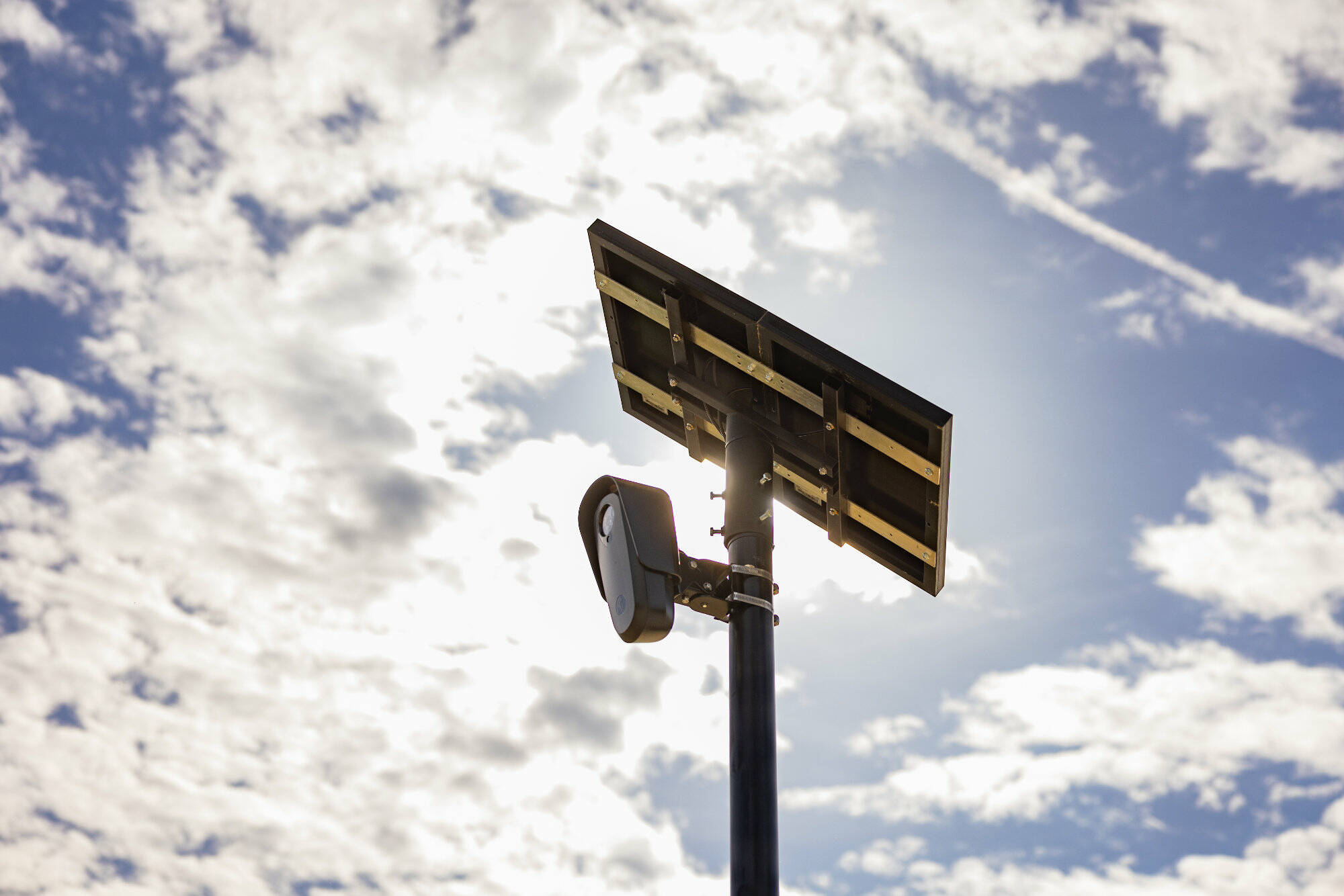Correction: The Courier-Herald misreported the timeline regarding Black Diamond’s use of Flock Safety automatic license plate readers. By the Oct. 19 meeting, the city had completed its 60-day trial period and needed to decide to continue using the cameras or remove them. The article has been updated.
Black Diamond Police Chief Jamey Kiblinger said the first 60 days of using automatic license plate readers has been a “great success.”
The City Council began talking with Flock Safety about using automatic license plate readers (ALPRs) on well-traveled roads last spring, and installed them about two months ago.
These ALPRs are stationary — not installed on police vehicles or worn on police officers — and only takes photos of license plates and vehicles, not faces. They also do not record vehicle speeds.
When a Flock Safety ALPR takes a photograph of a license plate, that information is cross-referenced with a databank of information to identify vehicles that have been reported stolen or otherwise implicated in a suspicious circumstance or a crime, from being nearby a recent break-in or even involved in an AMBER Alert.
Officers are then alerted to the vehicle and dispatched.
No other personal information is stored in the databank of plate numbers, and law enforcement can’t use the database to search by name, date of birth, social security number, gender, race, owner of a vehicle, or “anything to do with a person,” a spokesperson said. Additionally, all data is “hard deleted” after 30 days, according to the Georgia-based company.
There was no way to determine what sort of success the cameras could have in a city like Black Diamond.
In a February meeting with the City Council, Kiblinger said that the city doesn’t have a high crime rate — which includes 19 vehicle theft reports, 83 shoplifts, and 2,399 suspicious vehicle stops in 2022 — but that she saw an opportunity for her officers to be able to develop actual leads on crimes that would normally be cold from the get-go, like for burglaries, vehicle thefts, and hit and runs.
Her optimism appears well-placed; during an Oct. 19 council meeting, Kiblinger was able to tell the City Council that the Flock Safety ALPRs tracked 28 stolen vehicles traveling through the city, helped officers recover four stolen vehicles, and even assisted outside agencies that were investigating a homicide (the investigation into this incident is ongoing) — all within two month’s time.
“I would consider it a great success,” Kiblinger said in a recent interview, noting that 70% of crimes involve a vehicle.
The cost of the five cameras is $15,000 a year.
“Any technology that we can leverage that ultimately helps solve, deter, and prevent crime, assists victims, and provides leads in investigations, I would say is worth the cost,” she continued. “Our job is to keep our community safe. This is a piece of technology that can help us do that.”


